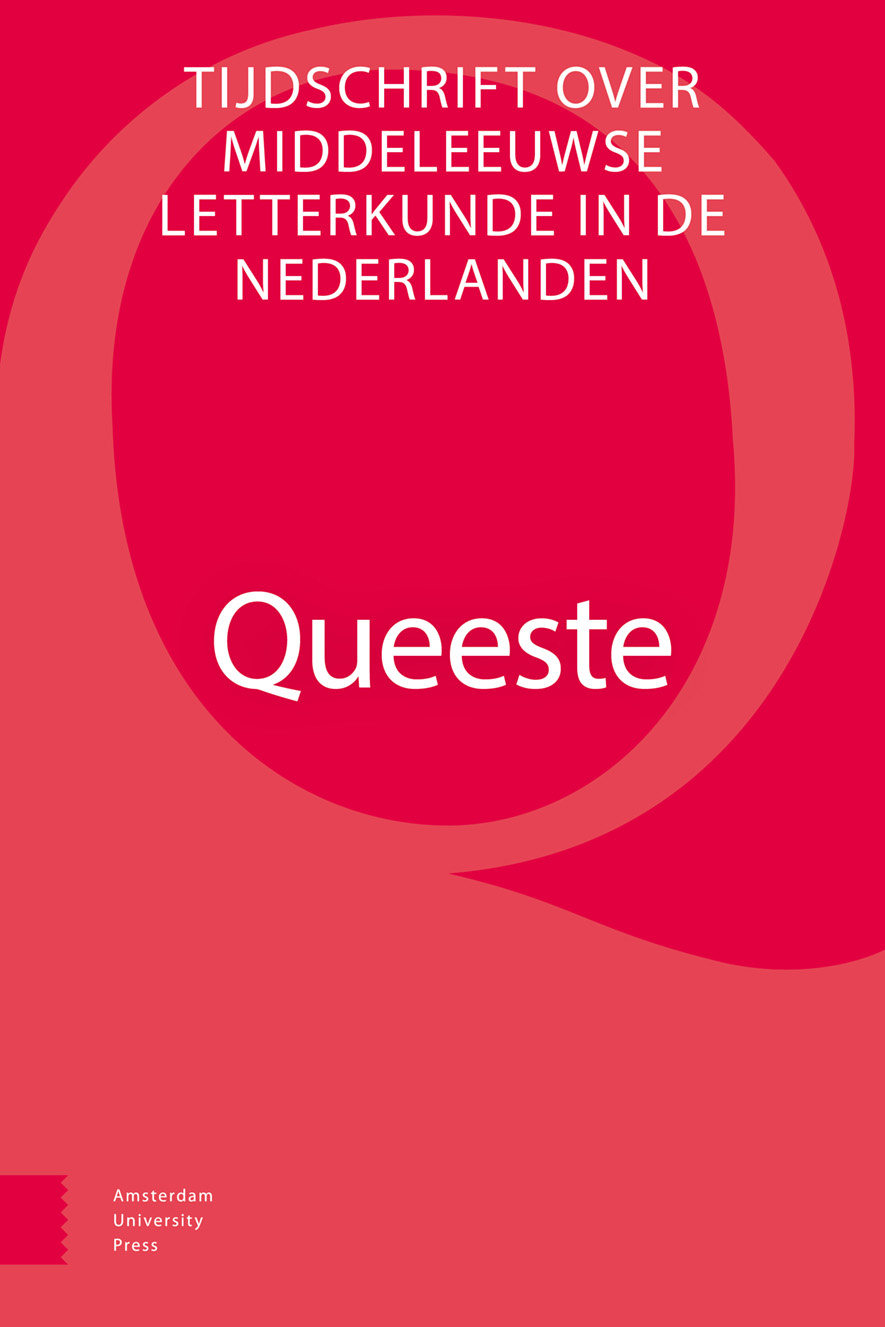- Home
- A-Z Publications
- Queeste
- Previous Issues
- Volume 28, Issue 1, 2021
Queeste - Volume 28, Issue 1, 2021
Volume 28, Issue 1, 2021
-
-
Een bouc in walsche, a Book Written in French
More LessAuthors: Dirk Schoenaers & Alisa van de HaarAbstractIn late medieval and early modern times, books, as well as the people who produced and read (or listened to) them, moved between regions, social circles, and languages with relative ease. Yet, in the multilingual Low Countries, francophone literature was both internationally mobile and firmly rooted in local soil. The five contributions collected in this volume demonstrate that while in general issues of ‘otherness’ were resolved without difficulty, at other times (linguistic) differences were perceived as a heartfelt reality.
-
-
-
French Literature in Mono- and Multilingual Social Contexts
More LessBy Lisa DemetsAbstractThis article analyses the production and consumption of francophone manuscripts in thirteenth-century Flanders from a multilingual perspective. The polyglot linguistic reality of the County of Flanders, home to both Dutch- and French-speaking communities, is evident in documentary sources and manuscripts from around 1200. Using a database compiled for The Multilingual Dynamics of the Literary Culture of Medieval Flanders (ca 1200–ca 1500) project, the quantitative evidence for the apparent popularity of French literature will be scrutinized in the extant manuscripts produced and used in Flemish urban, monastic, and court environments during the thirteenth century. Furthermore, manuscript case studies related to the Flemish court illustrate how thirteenth-century francophone literary culture is shaped by social milieus and user contexts, including examples of the interregional francophone networks of noblewomen, cultural exchange between the court and urban elites, and a renewed interest in crusader history.
-
-
-
Compilation as Palimpsest
More LessAbstractThis article offers an initial assessment of the multiple and varied uses of a manuscript of the Liber Floridus as a source of the early thirteenth-century Histoire ancienne jusqu’à César. The material deriving from Lambert de Saint-Omer’s twelfth-century encyclopaedic compilation ranges from idiosyncratic chronologies and genealogies to his abridged versions of Daretis Phrygii de excidio Troiae historia and the Epitome of Julius Valerius. Uncovering the origins of these passages compiled in the Liber Floridus alters our understanding of the composition of the Histoire ancienne and provides new evidence of the wider legacy of Lambert’s compilation.
-
-
-
Brabant, Holland, and Confession in the Cent Nouvelles nouvelles
More LessMost of the tales of the Burgundian Cent Nouvelles nouvelles have an identifiable origin in a European anecdote culture but have been repurposed with a Burgundian setting to fit the collection. Examining tales set in Holland and Brabant reveals that, while Holland is presented as ‘other’ from the male aristocratic society of the Burgundian ducal court, Brabant is treated as local, even where tales with similar themes are set in both regions.
-
-
-
From Lyons to Antwerp
More LessBy Ana PairetAbstractThis article examines the multilingual transmission of the late medieval idyllic romance Paris et Vienne. The genealogy of incunabula editions of this pan-European bestseller is obscured by an unsettled bibliographical record. The little-known first French edition printed circa 1480 is likely the first printing in any language. The analysis highlights textual and paratextual transformations from the French editio princeps to Gheraert Leeu’s illustrated edition of 1487. I argue that the second Lyons imprint is the source of Leeu’s edition or that they share a common source. Identification and collation of French sources brings into focus the transmission process and illuminates the ways in which the illustrated editions published in Antwerp accelerated circulation across Europe. Leeu’s multilingual adaptation offers a rare example of triangulated cross-cultural transfers, in which translations of French-language texts were produced with an eye on the Anglophone print marketplace.
-
-
-
Le roman médiéval d’expression française dans les anciens Pays-Bas entre 1550 et 1600
More LessBy Renaud AdamAbstractIn recent years, the dissemination of medieval-inspired French texts through the printing press has received renewed attention from the scientific community. This research has shown, inter alia, that the Gutenberg revolution, although considered to be one of the thresholds of modernity, did not sound the death knell for the Middle Ages. On the contrary, the medieval legacy found an opportunity to perpetuate itself for several decades through this new medium. My own work in this field has made it possible to point out that the caesura of the years 1530-1540, often put forward as a moment of rupture with the literary tradition of the Middle Ages, was not as abrupt as some might have thought, at least in Hainaut.
In the case of the former Low Countries, many areas still remain unexplored. This is notably the case for the production of medieval romances in French during the second half of the sixteenth century, which I propose to examine. This particular period is all the more interesting to study because it lies between the supposed rupture with the medieval literary tradition of the mid-16th century and the renewal brought about by the 17th-century publishing phenomenon known as the ‘Bibliothèque bleue’. An analysis of the titles printed between 1550 and 1600 and their peritexts, as well as the material examination of these editions, will contribute to a better understanding of this complex publishing phenomenon, navigating between ‘old romances’ and ‘new language’.
-
Volumes & issues
Most Read This Month


